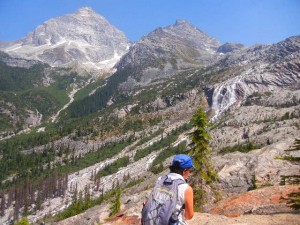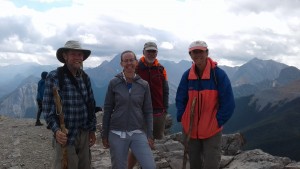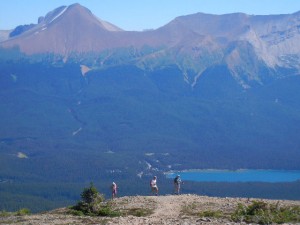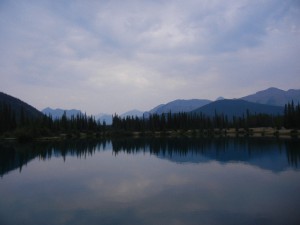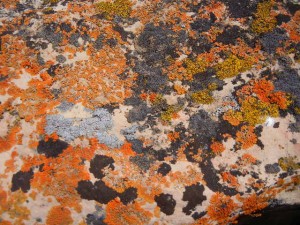20-23 July: Glacier National Park in Montana consists of large sedimentary mountains that have been carved extensively by glaciation, which left behind bowl-shaped cirques, U-shaped valleys, jagged knife-edge ridges, and sharp peaks. The large continental glaciers are long gone, but there are still remnant mountain glaciers clinging to the steep mountain walls high above the valleys. The park has several long lakes filled with water of a vibrant turquoise blue color, due to the very fine-grained “glacial flour” suspended in the water flowing from the melting glaciers (as rocks trapped in a moving glacier scrape against the bedrock below, they produce a fine powder). The steepness of the valley walls makes for some very scenic waterfalls, such as St. Mary Falls and Virginia Falls, which we hiked to on our first day in Glacier. We had now been joined by a third “Old Fogies Outing Club” couple, Dick and Sonia, who would be traveling with Rob & Judith and us for the next three weeks in the Rocky Mountains of Montana, Alberta, and B.C.


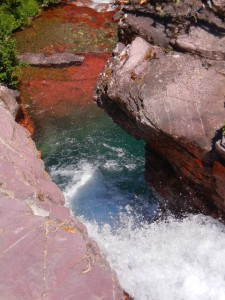

Amy and I had vacationed 40 years ago in Glacier Park, and we enjoyed leading our friends on one of our favorite hikes from our previous trip, through Siyeh Pass. The trail wound through meadows filled with the distinctive tall white plumes of beargrass flowers, as well as many other kinds of wildflowers, and then climbed above treeline, where the wind was very strong, passed above a large snowfield, went through the pass, and descended through another valley with views of Sexton Glacier, one of the remaining glaciers in the park. There are about two dozen left, and at their projected rate of retreat there may not be any left in another 10 or 15 years.


Another hike took us through a forest of large old growth western red cedar trees and up to Avalanche Lake nestled in a glacial cirque. On our final day in Glacier, we hiked from the historic Many Glacier Hotel past Josephine Lake and up toward Grinnell Glacier. One entertaining spot on the trail cools hikers off as they pass directly through a waterfall.




















